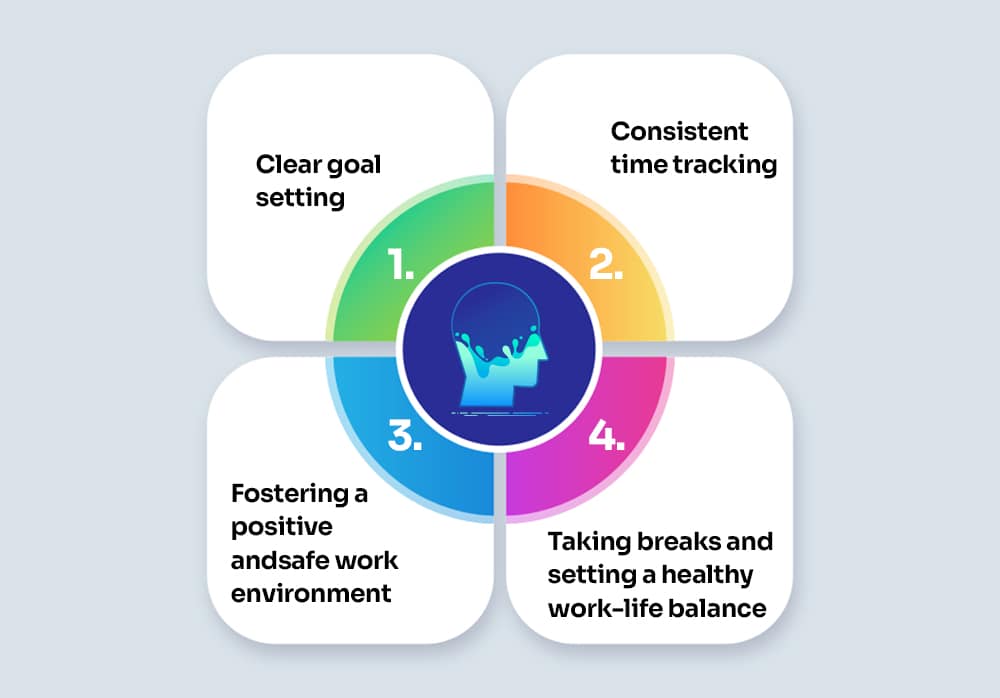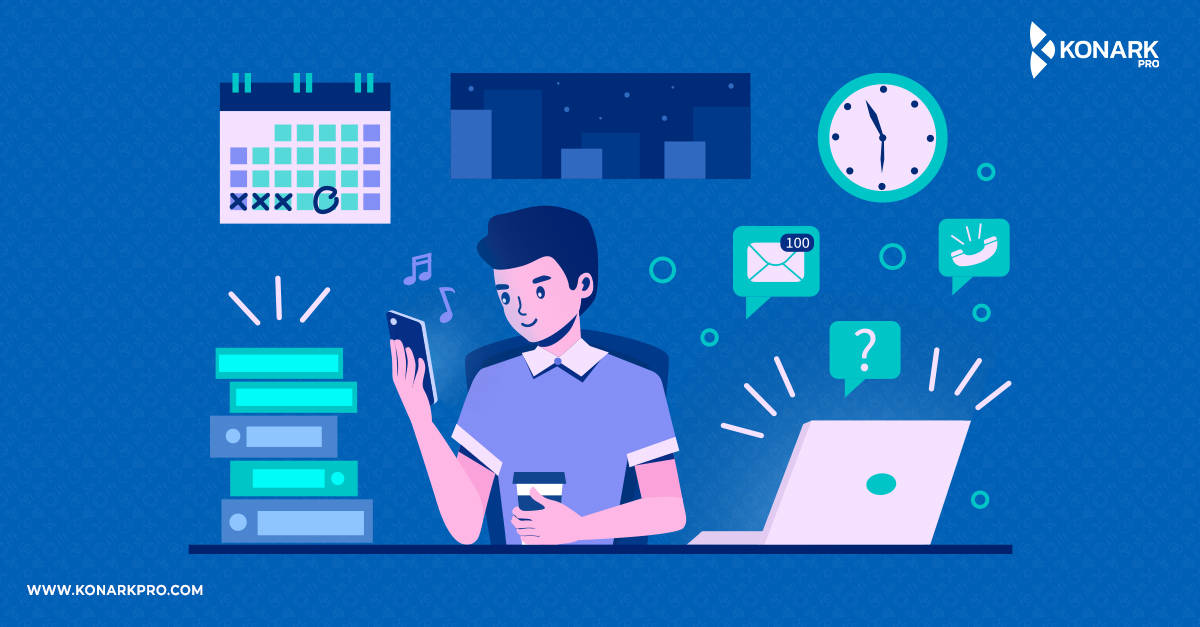Procrastination, the greatest time thief, appears to be taking over these days. We continually balance productivity and the voice of “I’ll do it later” in what seems to be a never-ending struggle between entertainment and deadlines. So, the question remains: Are we just laid back, or is there a way to escape the trap of procrastination and beat the clock?
In a survey, data shows 80% of employees admit to procrastinating in their workplace between 1 to 4 hours. That’s why it is important to put in place techniques that promote productivity and assist employees in overcoming procrastination habits. In this blog, we’ll look at some productivity tips, hacks, and measures to encourage a more productive workplace environment.
Signs and reasons for procrastination
Recognizing procrastination in the workplace can be challenging, but if left unaddressed, it can harm the work ethic and overall performance of any organization. Here are a few common signs and reasons for procrastination:
- Repeatedly delaying tasks
- Spending time on non-essential tasks
- Not prioritizing what’s important
- Constantly making excuses
- Feeling overwhelmed
- Low motivation
- Problematic work environment
- Low energy
- Little capacity for self-control
- Struggling with time-management skills
Productivity measurements, such as a technique to measure productivity in real-time, can allow for better results given these underlying challenges that employees may encounter with a lack of efficiency in their workplaces.
Listed below are a few key productivity tips and tools that can help employees excel in any field.
4 productivity tips to improve employee efficiency


1. Clear goal setting
Did you know that setting goals can rewire our brains, according to studies in neuroscience? Setting goals has been associated with increased motivation and improved self-esteem. When someone establishes a goal, their brain processes information on a different level and compels them to work harder to accomplish that particular target. Setting goals, therefore, becomes a crucial productivity tip that encourages many individuals to push themselves and, as a result, become more efficient in their line of work.
Tasks and projects are simpler to put off when people are uncertain about what needs to be done. Employers should set clear objectives for their employees, outlining the expected results and deadlines. Tools such as to-do lists, reminders, and awarding/recognizing employees’ work are highly resourceful when creating these set goals.
Why is it that people find themselves reaching for more coffee as their loyalty cards near completion? The answer lies in the fascinating concept known as the goal gradient hypothesis, which not only explains our behavior in pursuit of rewards but also holds valuable insights into boosting employee productivity in the workplace.
2. Consistent time tracking
An excellent way to increase employee productivity is through time tracking. Allowing individuals to employ time-saving techniques and tools can really help employees gain insight into how their time is being spent. It aids in identifying time-wasting or non-essential tasks, distractions, and inefficient habits. Employees can prioritize tasks and manage time more wisely.
Time estimation and planning are two more ways that time tracking can help employees. Employers and employees can plan and optimize workflows to the most efficient variable by using productivity tools like KonarkPro that help analyze which aspects of their tasks tend to take up the majority of their time. During working hours, employees become more aware of time management. It enables opportunities to assess how effectively individuals can stick to schedules, highlight areas for development, and put strategies into action that will improve the way time is handled. To increase overall productivity, employees can refine their approach and create efficient routines over time.
By itself, time tracking cuts procrastination risks. Additionally, adopting tools and software accelerates and simplifies the procedure immensely.
3. Fostering a positive and safe work environment
The productivity of employees is greatly influenced by their environment of work. Motivation levels and procrastination habits can both be significantly impacted by a positive and encouraging environment. Employers should promote teamwork and open communication, and acknowledge employee contributions. Procrastination may be much avoided and productivity can be significantly improved by building an environment that prioritizes employee well-being and offers opportunities for personal and professional development.
In any workplace, other factors like the physical environment itself can have a significant impact on individuals. The temperature, lighting, and noise levels are only a few examples of variables that can affect productivity measurements.
Productivity and employee satisfaction at work are counterbalanced by each other. According to a study, workplace happiness enhanced productivity by 12%, showing that when people are happy at work, they are more likely to be motivated and work with colleagues more effectively. A good atmosphere is necessary for every organization to excel in its path.
Using this productivity tip can significantly alter how employees feel about their work environment and how motivated and productive they are. Making sure they are secure promotes an ideal atmosphere for work.
4. Taking breaks and setting a healthy work-life balance
Working continuously for a long time on any task can be very taxing for anyone. For this reason, regular breaks can be quite helpful and generally increase productivity. Effective breaks can aid in stress reduction, allowing employees to return to work with a fresh perspective and mindset.
Not taking effective breaks throughout the task can lead to burnout, a state when individuals face physical and emotional exhaustion. Burnouts can lead to decreased productivity and result in an overall drop in job satisfaction. Regular breaks allow workers to rejuvenate, reduce burnout, and promote sustained productivity and engagement over time.
Maintaining a healthy work-life balance is also another method to preserve job satisfaction and productivity. This blending of work and personal life lowers stress, improves job fulfillment, and fosters an inviting work environment. Employees are typically more engaged, devoted, and productive when they feel supported in juggling their personal and professional life.
Productivity hacks summed-up
In conclusion, the efficiency of employees and the performance of the organization as a whole can be greatly compromised by procrastination. Employers may promote productivity and foster a work environment that inspires staff to overcome their procrastination habits by putting the techniques covered in this blog into action. Productivity hacks such as goal setting, time tracking, creating a healthy environment, and maintaining a healthy work-life balance ideally help employees be more efficient and turn procrastination habits into productivity.
